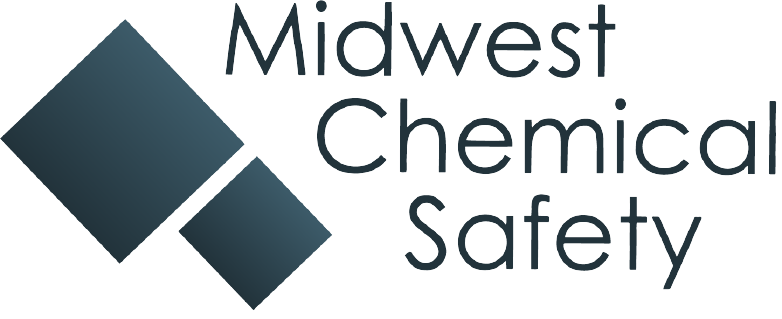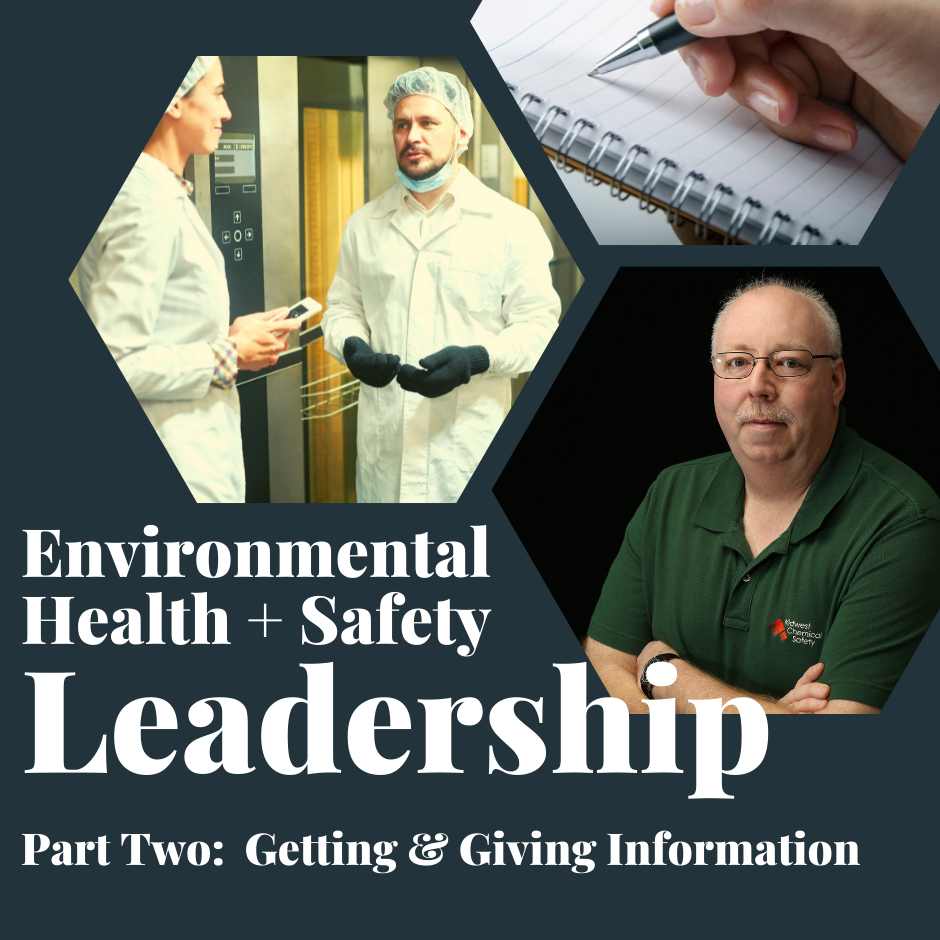This is Part two in Midwest Chemical Safety’s series on Leadership in Environmental Health and Safety. Catch up on the first part of the series here:
Part One: Leaders- Not Managers in EHS Leadership

There is no doubt: effective communication is vital to group success. Good leaders are masters of this skill. Nothing can start or be accomplished until communication takes place. The group cannot form, the group’s purpose, vision, goals remain elusive, and tasks cannot be assigned unless communication has occurred. As a group coalesces into a working team, members need to understand the group’s values and goals. As tasks get assigned and accomplished, individuals in the group will need to call on other members’ abilities and expertise to get tasks completed. Effective, efficient communication is the key to accomplishing the goals of the group.
There are numerous communication models, and there are scores of books, podcasts, and articles on effective communication. Here we will look at basic model for discussion purposes:
In our model above, the initial message flow is from the sender to the receiver; however, feedback is bidirectional between the receiver and sender, with feedback initiating with the receiver.
We use all our senses to gather information about our environment; the more senses we engage, the better the information we receive. However, the two primary senses that we use for person-to-person communication are sound and sight.
It is important to recognize that everyone on the team is both a sender and a receiver of information. For the team to be “on the same page” it is vital the team leader master communication skills to the best of their ability.
The Communication Environment and Controlling Information
The best communication environment (that is, the environment that minimizes the likelihood of confusing the message) is one where everyone is encouraged to freely express themselves. The team and the team leader must consciously create these environments. Hallmarks of good communication environments include active listening by all the participants, note-taking, and new ideas are placed “on the table” without fear of embarrassment or criticism from other team members. Team members are giving speakers their undivided attention, maintaining eye contact, and are relaxed.
In the simple model, the sender controls very little of the information flow:
- The sender controls what is said, both the content and the context of the message; and,
- The sender controls how the message is transmitted. They choose the words, tone of voice, and so forth. So, to help ensure the message is well-communicated:
- Speak (or write) clearly.
- Avoid jargon and acronyms. (Government agencies are overly fond of acronyms!)
- Use a language that everyone understands. (Not everyone on the team may speak graduate-level chemistry, physics, or industrial hygiene!).
- Vary the tone and pace of delivery for spoken information.
- Use visual aids, but do not read your PowerPoint slides!
- Talk to the listeners – look at them.
- Encourage two-way conversations. Ask open-ended questions during the delivery.
The recipient controls:
- What is heard. The message received may be influenced by both verbal and non-verbal cues (such as body language) of the sender.
- The initial feedback that is given to the message sender. (Feedback is, ultimately two-way, but the recipient starts the process.) Useful feedback is:
- Descriptive as opposed to evaluative. Avoiding evaluative language will reduce the need to react in a defensive manner.
- Specific as opposed to general.
- Useful feedback takes both the needs of the receiver and the giver into account. It should consider the needs of everyone on the team.
- Useful feedback should be directed towards behavior that can be changed.
- Feedback is more useful when it is solicited rather than imposed.
- Feedback is checked for clarity, accuracy, and clear communication. That is, was the feedback understood?
Avoiding Message Distortion

Distortion occurs whenever a message articulated by the sender is interpreted differently by the receiver in the model above. Some people call this “noise.” Distortions can arise from many causes, such as:
- Differing belief systems between the sender and receiver.
- Role expectations.
- Interest by one or both parties.
- Motivators.
- Conflict between the parties.
- Experience
- Use of differing standards. For example, quality standards? ASME or ISO or some other consensus standard?
- Distractions in the environment, such as ambient noise, cell phones, etc.
- Misunderstood acronyms. Remember, context is everything. Does EAP mean “Employee Assistance Program” or “Emergency Action Plan”? What about OD? Optical Density or Outside Diameter?
Avoiding distortion is vital to effective communication. Here are a few ideas that help avoid confusion when communicating:
- Take notes. Always capture information as it is received. Notebooks and pens have been replaced by voice and video recorders on our cell phones. (I still use a pen and notebook, though! If you do use the old-school pen and paper, make sure you write clearly so that you can read it later on; abbreviate as necessary and make drawings when it’s appropriate.) Review your notes within 24 hours and if you have questions, ask right away.
- Repeat back what you think was said; ask for clarity (e.g., “did I get that right?”) and verify that the message was received as it was sent.
- Use active, reflective listening to ensure the message was received and understood both precisely and accurately.
We are all subject to and guilty of filtering information as it comes to us. The best thing we can do is to recognize that we are all subject to filtering information and employ methods in our communication to prevent message distortion, such as repeating back information and asking the sender to clarify and verify the message. The more important the message is, the more vital that it is understood correctly.
Summary
The success or failure of your team will hinge, at least partially, on effective communication.
Want to take your EHS Team to “Best in Class” but don’t quite know where to start? Call Midwest Chemical Safety, LLC, 217-971-6047 or contact me by email at harry@midwestchemsafety.com See the original LinkedIn Post Here.

